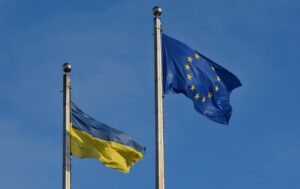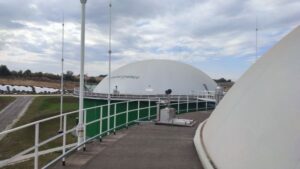
Sales of domestic cheese can be maintained only through the use of promotional sales, and the results of most operators are still far from the level of last year, domestic cheese makers consider the import of European cheese to be the main obstacle, Infagro news agency reported.
“The expected decrease in cheese imports due to the strengthening of the euro has not yet occurred. In May, Ukraine imported 30% more hard, semi-hard and white cheeses. Separately, purchases of hard and semi-hard cheeses increased by 22% compared to May last year,” analysts said.
They noted that imported cheese occupies a fairly significant share of the Ukrainian market, and promotions are used in sales of European cheese no less actively than in sales of Ukrainian cheese.
Despite the huge problems with sales, Ukrainian cheese producers do not reduce base prices for their products, while promotional discounts often reach 25%, Infagro stated.

On Tuesday, the European Commission (EC) put forward a proposal to integrate Ukraine into the EU roaming zone from January 2026.
“We want Ukrainian citizens to stay connected with their loved ones across the EU, as well as in their home country. That is why we are offering Ukraine to join our roaming family. We reaffirm our unwavering commitment to supporting Ukraine and its citizens,” said EC President Ursula von der Leyen.
According to the European Commission’s press release, the implementation of its proposal will allow Ukrainians to call, send text messages, and use their mobile data from Ukrainian phone numbers in 27 EU countries at no extra cost. The same benefits will apply to Europeans who may be in Ukraine.
“Roaming is the first sector in which the EU will extend the internal market regime to Ukraine. In practice, this means that travelers from Ukraine visiting the EU and travelers from the EU visiting Ukraine will not pay any additional roaming charges. All mobile services, including calls, text messages, and data, will be charged at domestic rates,” Brussels explained.
The EC has sent its proposal to the EU Council for approval. According to the proposal, Ukraine will effectively join the EU’s “Roam Like at Home” zone on January 1, 2026, the European Commission said.

The Ministry of Agrarian Policy and Food has allocated sugar quotas for export to European Union countries, which will remain in effect until August 5, 2025, according to the ministry’s press service.
According to the report, the sugar quota has been distributed among exporters in proportion to their actual exports of this product to EU countries in January-May 2025.
The quotas were allocated to the following companies: TOV “Radehivsky Sugar” — 3,977.6 tons, TOV “Tsukoragroprom” — 1,700.9 tons, TOV “PK ”Zorya Podillya” — 927.6 tons, PJSC “Teofipol Sugar Plant” — 915.1 tons, LLC “Narkevychi Sugar Plant” — 688.8 tons, LLC “Novoorzhytskyi Sugar Plant” — 598.4 tons, LLC “Starokostiantynivtsukor” — 451.6 tons, LLC “Shamraivsky Sugar” — 381.5 tons, LLC “Shepetivka Sugar” — 349.5 tons, LLC “Signet-Center” — 259.4 tons, LLC “Agrocomplex ”Green Valley” — 216.5 tons, Kraievyd LLC — 184.2 tons, Novomyrhorodsky Sugar LLC — 140.7 tons, Prisma-14 LLC — 121.7 tons, and Krasylivsky Sugar Plant PJSC — 94.0 tons.

The European Commission has confirmed the disbursement of the fifth tranche of emergency macro-financial assistance (MFA) to Ukraine in the amount of €1 billion under the ERA, which will be repaid from frozen Russian state assets.
“This further strengthens the EU’s role as Ukraine’s largest donor since the start of Russia’s aggressive war, with total support approaching €150 billion,” the European Commission said on Friday.
It is specified that the total MFA amounts to EUR 18.1 billion and is the EU’s contribution to the G7 Emergency Revenue Acceleration (ERA) initiative, which aims to provide Ukraine with financial support of approximately EUR 45 billion.
“These loans are to be repaid from the proceeds of Russian state assets frozen in the EU. With this latest payment, the total amount of Commission loans to Ukraine under this MFA will reach EUR 7 billion from the beginning of 2025,” the EC said.
The press release also recalls that “as agreed by European leaders at the Special European Council in early March and confirmed by President Ursula von der Leyen, the Commission stands ready to allocate the EU’s contribution to the ERA loan initiative if necessary.”
“It is in close contact with the Ukrainian authorities on the next disbursements. If Ukraine submits a request, the Commission is ready to respond quickly. This will allow the EU to support any significant increase in military spending in the coming weeks and months, helping to ensure that Ukraine is in a strong position ahead of any potential peace talks,” the press release emphasizes.

Today, June 12, the Council of the European Union recognized the equivalence of Ukrainian standards for the production of beet, sunflower, rapeseed, and soybean seeds with European requirements, according to the press service of the Council of the EU.
According to this decision, seeds of these crops produced in Ukraine will be able to enter the EU market. This means that EU-based companies will be able to diversify their seed production areas. The new rules will also help to maintain a continuous supply of high-quality seeds to the EU.
“The decision grants equivalence to beet, sunflower, turnip, and soybean seeds produced and certified in Ukraine, fodder plant seeds produced in the Republic of Moldova and officially certified by its authorities, as well as to the corresponding field inspections carried out. The equivalence confirms that the national procedures of the two countries offer the same guarantees regarding seed characteristics and rules for seed examination, identification, and control as those applicable to seeds harvested in the EU,” the statement said.
Moldova has received similar permission for fodder plant seeds.
The decision will enter into force 20 days after its publication in the Official Journal of the EU.

The Vitagro group of companies, which already has one biomethane plant with an annual capacity of 3 million cubic meters in the Khmelnytskyi region, intends to build two or three more such plants in a year and a half, each costing EUR6-6.5 million, according to the company’s director of development and investment, Serhii Savchuk.
“We plan to build two or three more plants with a capacity of 3 million cubic meters each. We estimate the cost of one plant at EUR 6-6.5 million. We will need about 1.5 years to do this,” Savchuk said in a comment to EnergoReform on the sidelines of the Solar Agro Conference organized by the Solar Energy Association of Ukraine.
He did not specify the details of biomethane exports from the first plant, noting that after a test delivery in February, “everything the plant produces is sold to a number of countries, including Germany and the UK, at market prices.”
During his speech at the conference, he suggested that the company may work with Ukrainian banks to expand its biomethane capacity.
“Today, our plant with a capacity of 3 million cubic meters of biomethane, which is produced from manure from our livestock complexes, is fully operational. We will build a pipeline, Ukrgasbank is here, you can pay attention to us,” he said to conference participant Mykola Alferov, deputy director of the SME Department at UGB.
Savchuk also noted that during the war, the group launched a bioethanol plant in the Ternopil region by reconstructing an alcohol plant it privatized at the end of 2022, which cost EUR20 million.
“We invested EUR 20 million, completely re-equipped the distillery, and now have 25,000 tons of bioethanol for export from the processing of 85,000 tons of corn,” explained the director of development and investment at Vitagro.
In a comment to Energorforma, Savchuk expressed hope that cooperation will eventually be established for the sale of bioethanol to fuel companies in Ukraine, which from May 1 must sell gasoline containing at least 5% of this substance, but do not mix the product here, instead importing it ready-made from Europe.
He also shared his experience of installing SES groups on farms for their own consumption, which he called “an absolutely effective investment.”
“Seven solar stations for our own consumption were installed in a few months, and we have developed an appetite for a second phase, so we want to launch separate complexes both on the roof and on the side. This is economics, this is ecology, this is the ESG (Environmental, Social, and Governance) trend, which is very relevant. We are a good example for the development of SES for our own consumption, and in the future there will be energy storage,” Savchuk said about Vitagro’s plans.
As reported in February 2025, Vitagro announced its intention to reach the planned annual capacity of the biomethane plant of 3 million cubic meters in 2025 and, if exports are successful, to build two more plants (in the Khmelnytskyi and Rivne regions) to increase production and exports.
At that time, it was indicated that the group of companies was considering the option of attracting foreign investors to its capital.
The company expected that the EUR6 million invested in the construction of the first biomethane plant in the Khmelnytskyi region would pay off in five years, but if the market continued to grow, it would pay off sooner. The company’s cost price for biomethane was stated at over EUR 500 per 1,000 cubic meters.
In February, the chairman of the board of the Bioenergy Association of Ukraine, Georgy Geletukha, noted that the average price of biomethane for export to Europe could be approximately EUR 900 per thousand cubic meters.
Agroholding Vitagro exported its first batch of biomethane in 67,000 cubic meters (destination country – Germany) on February 6, 2025.
The Vitagro group of companies is engaged in the production and processing of agricultural crops, in particular fruits and vegetables, dairy farming, and pig breeding. The group cultivates about 85,000 hectares of land in the Khmelnytskyi, Ternopil, and Rivne regions. In 2022, it acquired the Marylivsky Distillery (Nagirnyanka village, Ternopil region) from Ukrspirt.
According to the Unified State Register of Legal Entities and Individual Entrepreneurs, the ultimate beneficiary of the investment company Vitagro is People’s Deputy Serhiy Labazuk (parliamentary faction “For the Future”).